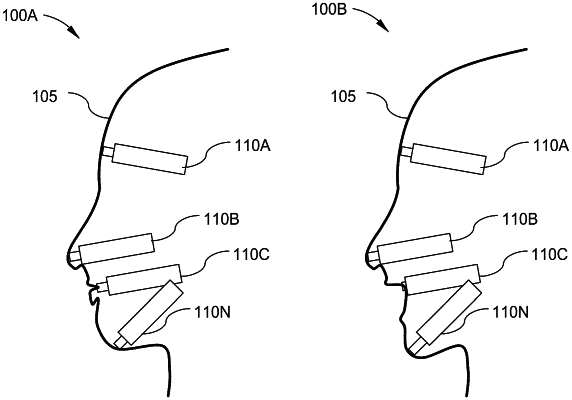| CPC G06F 30/17 (2020.01) [G06F 30/20 (2020.01); G06N 3/08 (2013.01); G06N 20/00 (2019.01); G06T 13/40 (2013.01); G06T 17/20 (2013.01)] | 20 Claims |

|
1. A method comprising:
generating a first plurality of static simulated meshes using a physics simulation model, wherein each respective static simulated mesh of the first plurality of static simulated meshes corresponds to a respective actuator configuration of a first plurality of actuator configurations for an animatronic mechanical design, wherein the animatronic mechanical design comprises a plurality of actuators and a deformable physical material coupled to the plurality of actuators;
training a machine learning model based on the first plurality of static simulated meshes and the first plurality of actuator configurations, wherein at least one actuator configuration of the first plurality of actuator configurations comprises a plurality of values corresponding to an actuator of the plurality of actuators that has a plurality of degrees of freedom to drive the deformable physical material of the animatronic mechanical design, wherein at least one input neuron of the machine learning model corresponds to either (i) one or more respective actuators of the plurality of actuators, or (ii) an actuation point of the deformable physical material, wherein training the machine learning model comprises:
generating a first predicted mesh using a first actuator configuration of the first plurality of actuator configurations as input to the machine learning model, wherein:
the machine learning model uses a quasi-static framework to predict a state of the animatronic mechanical design when the first actuator configuration is applied to the plurality of actuators, and
the first predicted mesh corresponds to predicted deformation of the deformable physical material when the first actuator configuration is applied to the plurality of actuators; and
refining the machine learning model based on a difference between the first predicted mesh and a first simulated mesh, of the first plurality of simulated meshes, corresponding to the first actuator configuration;
generating, using the machine learning model, a single predicted mesh for the animatronic mechanical design by processing a single set of actuator configurations as input to the machine learning model; and
facilitating virtual animation of the animatronic mechanical design based on the single predicted mesh.
|